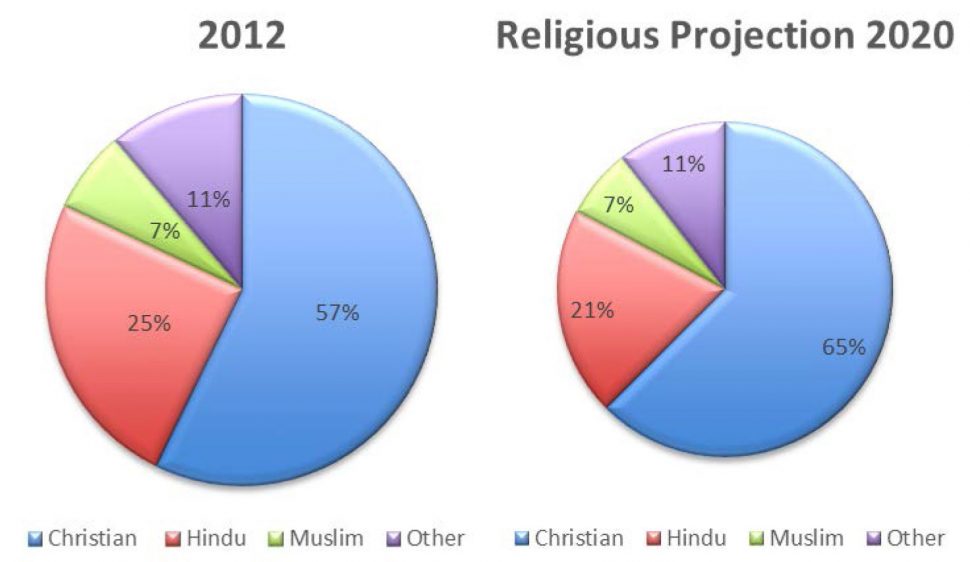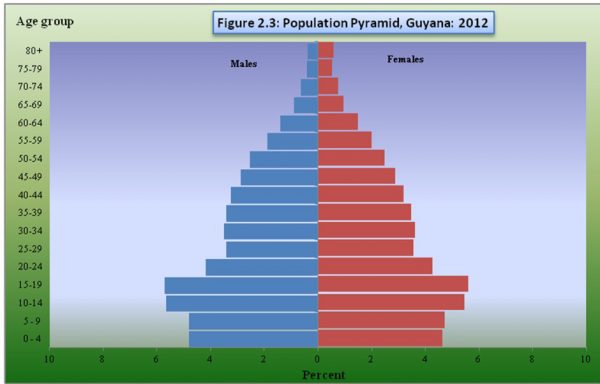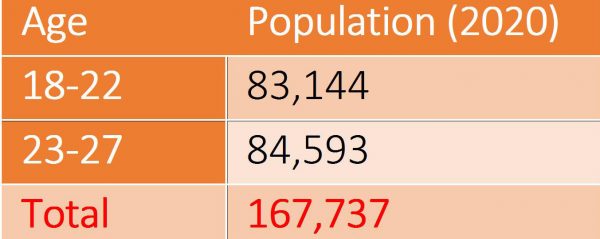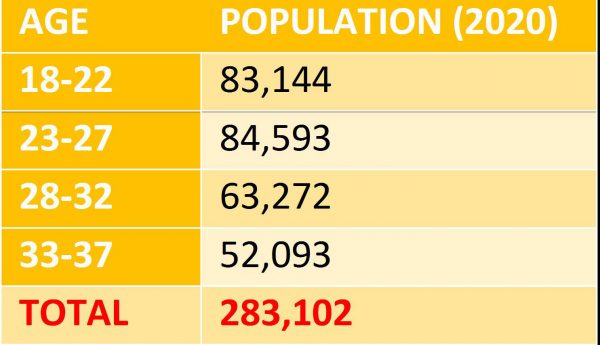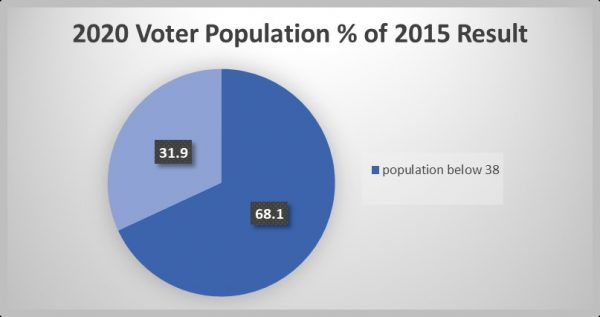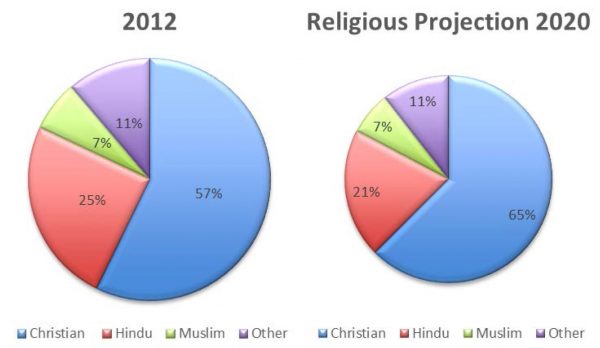Economist and politician Peter Ramsaroop says that based the age distribution of Guyana’s population, young voters will be key for the 2020 general elections.
Evaluating the 2012 Census Data (released in July 2016 by the Bureau of Statistics) and extrapolating the numbers out to 2020, he told Sunday Stabroek that the figures reflect a radically changing voting population than in past elections.
“The 2012 census data shows that if you push those bands up by 8 years, which is where Guyana will be in 2020, the first time and second time voters will be almost 170,000 persons,” he said.
This, Ramsaroop believes, will force a different thinking on the selection of the candidates for the contesting parties as compared to the past.
“This generation would normally have a positive view of the nation’s diversity and believes that dreams are more attainable, but not that they are entitled to it. They want to hear the “We” more instead of the “me.” These individuals tend to get more upset at hearing about the past, they want more to hear about how they can get involved in the future,” Ramsaroop said based on his research.
Ramsaroop is an advisor to Opposition Leader Bharrat Jagdeo and has been associated with both the PNCR and the PPP/C. In the last electoral cycle, he pledged support for the PPP/C
He said the younger voters will be more politically independent.
“This generation can also be referred to as the iGeneration, as they literally grew up with technology and social media in their hands. They are poised to dramatically change the cultural, economic and political landscape for some time to come. Studies show that they are distrustful of government because they’ve seen good people, such as their parents who did all the right things, laid off from longstanding jobs and careers as in the case of the sugar workers, and in other areas such as large pay increases for politicians and more taxes on the ordinary citizens, while they have to listen to their parents complain about a bad economy and lack of disposable income. They are cautious with finances, always looking for the best deals and the best value,” he said.
This group will not be easy to win over, Ramsaroop said, contending that it has a mind of its own. He notes that the youth movement is what helped the present APNU+AFC coalition to come to the seat of government.
The data he referenced also depicts that persons below the age of 37 will be 284,000 persons in 2020. That is almost 80,000 more votes than either party got in 2015, when the PPP/C secured 202,000 votes and APNU+AFC 207,000 votes.
Ramsaroop’s perspective comes amid campaigns in the country’s two largest parties for key positions. Next month, PNCR candidates Basil Williams, Volda Lawrence and Joseph Harmon will contest the position of chairmanship of the PNCR—the main constituent of APNU—and it is unclear which of them has tapped the younger demographic.
With Local Government Elections scheduled to be held on November 12th this year, the PPP is to choose its presidential candidate before these polls. The party’s planning has been upturned by the Caribbean Court of Justice decision upholding the country’s presidential term limit. While former President Bharrat Jagdeo had been expected to be the choice, the party now has to confront internal divisions and make a selection from a group that includes former Attorney General Anil Nandlall, former Commerce and Housing Minister Irfaan Ali and former Sport and Culture Minister Dr Frank Anthony. A consideration in making the choice would be who could better reach the younger cohort. A public declaration by PPP member Charles Ramson Jr that he is also interested in becoming the presidential candidate has also focused discussion on the impact that young PPP members can have on the selection process, which is usually confined to the members of the party’s Central Committee.
TOTAL FIRST TIME AND SECOND TIME VOTER PROJECTION
2020 POPULATION BELOW 37
Ramsaroop added that the Christian population is an important group. In 2012, the Christian population was 57%, while the Hindu population was 25% and the Muslim population was 7%. The Hindu population declined from 29% in 2002, while the Christian population rose from 52% in 2002. The projected Christian population in 2020 is above 60% while the Hindu population will be down to about 21% and the Muslim population would remain at 7%, he said. He said APNU+AFC had an advantage in this demographic. In 2020, he strongly believes that candidates will have to demonstrate a broader religious tolerance.
Ramsaroop said he has always said the next generation will be the difference in Guyana and the moment has arrived. “Parties must seriously evaluate these and other indicators as they go down the path of selecting their presidential candidates. Any deviations can and will have drastic impact on getting out the vote and a win,” he added.
